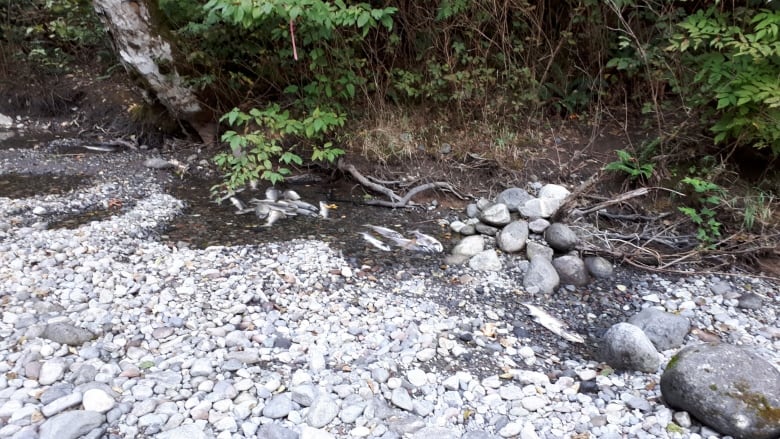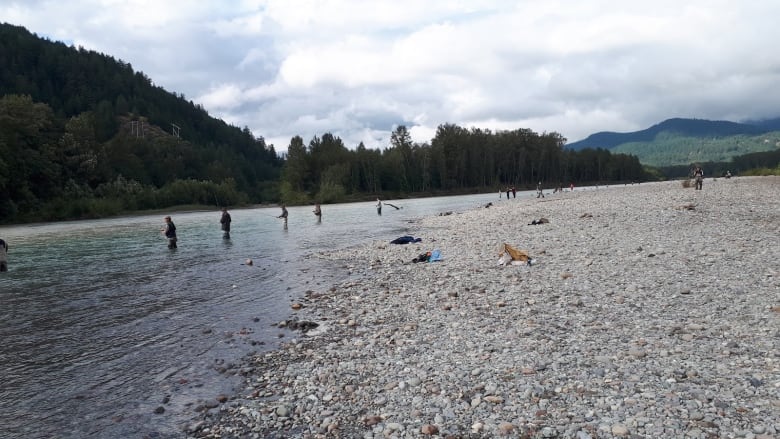Clint Goyette has fatigued a lot of time on the rivers around Squamish, B.C., over the last two decades as a fishing control, but even he was shocked to see hundreds of dead fish lying in pools along the Cheakamus River recently.
The engendering pink salmon, on their way to lay thousands of eggs, became trapped in unique pools and died as water levels in Cheakamus River rapidly cut — the result of a nearby BC Hydro facility decreasing the river’s flow, recalled as ramping, at the end of September.
“I was out guiding the day of the [river level] reduction,” said Goyette, who ladder prints Valley Fishing Guides in Squamish, about 65 kilometres north of Vancouver.
Goyette state he ran into BC Hydro crews out on the river surveying the damage, one of whom give prior noticed him about what he was about to encounter further up the river.
“I passed one of their group … and he said, ‘There’s hundreds of dead fish up there so don’t be surprised,’” Goyette disclosed.

Biologist Chessy Knight, who taking photos of the dead fish on Sept. 20, estimates about 300 fish were destroyed when the water levels in the Cheakamus River fell by about half settled the course of a day.
The pink salmon were trapped in shallow pools and couldn’t interest to deeper, flowing sections of the river.
“This has been happening for multifarious, many years on the Cheakamus,” said Knight, who’s also president of the Squamish River Watershed Friendship.
“But this is the first time that we saw adult spawners also unnatural by these flow manipulations.”
That’s significant, she said, because those engendering salmon never had a chance to lay their eggs and produce much-needed issue.
‘We take it extremely seriously’
BC Hydro is aware of the issue and acknowledges reliability.
“It was unexpected. We thought that by lowering the levels at the rate we did, the salmon would not be stranded and last will and testament be able to find their way to deeper water in time,” said spokesperson Geoff Hastings.
BC Hydro jocular tummy rots a nearby power facility and is allowed to increase or decrease the water plenty in the river as needed. Hastings also noted that this is not the commencement time fish have been stranded as a result of ramping.
Go together to Hastings, the company had to lower the levels in September because of public aegis concerns — and that the facility has to balance safety, environmental protection and get-up-and-go generation.
“We take it extremely seriously,” Hastings said. “We don’t want to be stranding fish and we are tough to learn from these events and then hopefully not do it again.”

‘Not sustainable’
Knight said BC Hydro should bear known better and waited for the spawning fish to get to safety.
“BC Hydro should give birth to just left the river alone until we got the big fall rains,” she demanded.
BC Hydro’s water licence, which allows it to control the river supplies, is currently undergoing a government review.
Knight said her group is speaking for slower rates of ramping and more water to be left in the river in make to avoid stranding fish.
“There’s this common perception that hydroelectric power is benign but … it is not harmless. It is not without impact,” she said.
“We should have hydro as take a part in of our clean energy portfolio, but the way it’s being done is not sustainable.”







